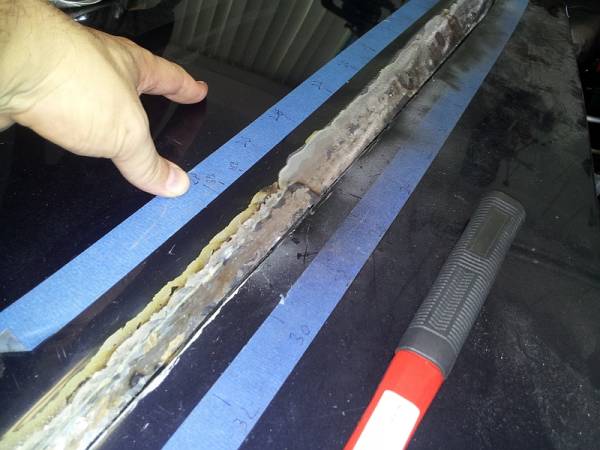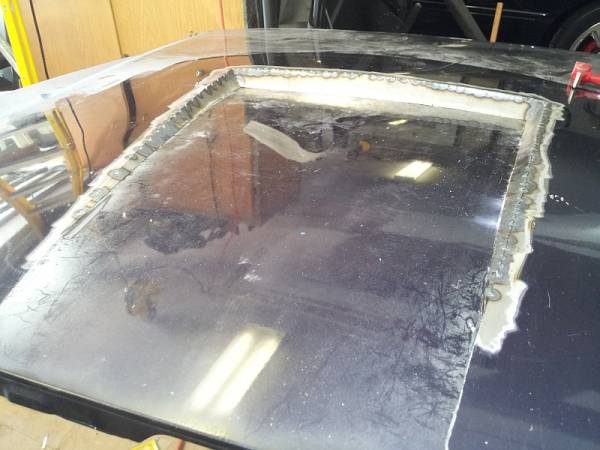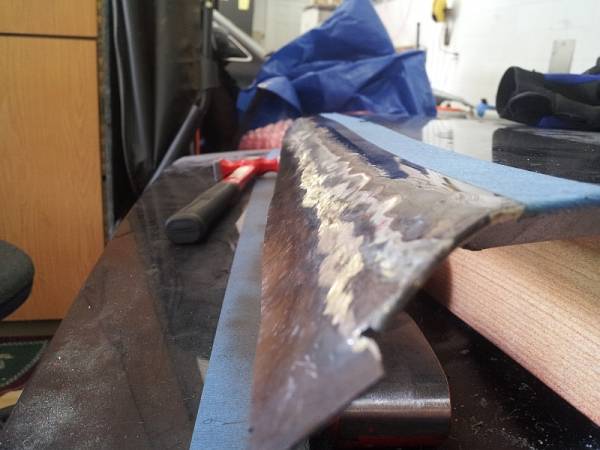Page 1 of 1
Welding autobody metal
Posted: Sat Oct 18, 2014 7:14 pm
by Ron66
Re: Welding autobody metal
Posted: Sat Oct 18, 2014 8:47 pm
by xwrench
Tacks are your friend. Use many and skip weld. Try to do only small area at a time then let it cool. You must limit your heat input but it's tricky under the best of conditions. Sounds like a cool project. Be sure to post pics. Before, during, and after are all cool to look at imho.
Cheers.
-Eldon
Re: Welding autobody metal
Posted: Mon Oct 20, 2014 10:09 am
by frederick flintstone
this is where ALL the restoration shows get it ALL wrong.
I truly hate that they ALL show people MIG welding sheet metal.
fusion TIG welding or even very, very low heat oxy/fuel welding is a far better way to weld auto body sheet metal.
if you TRY do any real metal working to a MIG joint or a TIG weld with filler wire you will be fighting the extra metal.
doing it right is truly an art form that takes practice and very few can do it right.
Re: Welding autobody metal
Posted: Mon Oct 20, 2014 7:55 pm
by Jacked800
frederick flintstone wrote:this is where ALL the restoration shows get it ALL wrong.
I truly hate that they ALL show people MIG welding sheet metal.
fusion TIG welding or even very, very low heat oxy/fuel welding is a far better way to weld auto body sheet metal.
if you TRY do any real metal working to a MIG joint or a TIG weld with filler wire you will be fighting the extra metal.
doing it right is truly an art form that takes practice and very few can do it right.
I've got to completely disagree with that. However, there might be someone out there that it might work for. I myself consider tig my strong suit yet I bought a mig specifically for auto body. Doing patch panels on rusty vehicles up here in the North Country, Tig or O/A pretty much burns away whatever you are trying to weld the new patch panel to. In a different environment where you don't have the rust I am sure tig would work. Tig would also be a little softer weld and easier to blend into the other metal. Still more heat and distortion and even more with O/A.
I consider myself pretty good with an O/A torch. I just brazed a welding cooler radiator back together after cutting six loops out of it, making six new loops out of 3/8 copper tubing, brazing them into 2 half inch copper pipe, and all so I could modify this thing to fit inside a Bernard Welding cooler. It's back up and running.
My point being, that I tried tig and O/A for my particular application and it would not work. It was not due to lack of experience.
That's my two cents, my opinion. THANKS Jack
Re: Welding autobody metal
Posted: Tue Oct 21, 2014 7:57 pm
by Otto Nobedder
I think most "auto body" people have forgotten the definition of the word, "planish."
Look it up, learn to do it, and the debate goes away.
That extra metal can be used to your advantage, and it doesn't matter which process deposited it.
Steve S
Re: Welding autobody metal
Posted: Tue Oct 21, 2014 8:12 pm
by MinnesotaDave
Otto Nobedder wrote:I think most "auto body" people have forgotten the definition of the word, "planish."
Look it up, learn to do it, and the debate goes away.
That extra metal can be used to your advantage, and it doesn't matter which process deposited it.
Steve S
I would tend to agree and disagree a little.
"Modern" repairs are often patched-in after a step is created with an air flange tool.
Then either tacked in or glued with a special two part epoxy.
Few people pound on anything anymore with the pre-formed repair panels so easily purchased.
The guy that paints my stuff can do either method, but time costs money - so I always have the fastest method done.
(I rarely do any body work since I can't paint anyway)
Oxy fuel wire is generally 45k while tig is usually 70k wire.
The oxy fuel wire is easier to grind, pound, and shape.
In my opinion of course






